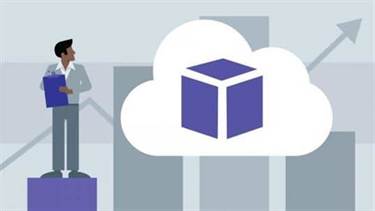An API is like a digital mediator that enables different software applications to talk to each other and exchange information. It defines the methods, parameters, and data formats you can use to access certain features or retrieve data from an application or service. It can be as simple as a text file, but it’s not safe, not fast and not concurrent. It can be a local one, a file-based one, or can be on an other server or on some cloud (AWS, Google).

They urge partners to make requests using just the HTTPS protocol to increase security. Remote APIs establish interaction standards for programs that operate on different machines. Each software product accesses resources not present on the machine that is requesting them, which explains the term. Because two remote apps are connected over a communications network, primarily the internet, most remote APIs are developed using web standards. As humans, we use words, gestures, and facial expressions to convey our ideas, desires, and thoughts.
A real example of an API
Apidog enables secure data transfer and storage by default, but it’s crucial to implement additional security measures, such as encryption and access controls, to safeguard sensitive information. Regularly audit and update security protocols to stay ahead of potential threats. If a query encounters an issue, such as a syntax error or a database connection problem, the API can catch and handle the error, preventing it from crashing the application. Proper error handling is essential for maintaining the stability and reliability of an application. Zapier is a no-code automation tool that lets you connect your apps into automated workflows, so that every person and every business can move forward at growth speed. However, this architectural style allows users to download and run code in the form of Java applets or scripts (such as JavaScript).
We are excited to share that Gartner recently named IBM a Leader in the 2023 Gartner® Magic Quadrant™ for API Management. And even though the API landscape is constantly shifting and evolving, IBM has been a Leader in this report eight times. Both define a standard communication protocol for the exchange of messages in XML (Extensible Markup Language). By going to your billing dashboard, then transaction history, you’ll see a list of your invoices.
Learn more and get started
Developers can use them to create a better user experience for their users. There is no need to memorize these status codes, as the list is huge and you will subconsciously learn them as you encounter them in your development journey. Just like a response, a request has a structure including a URL, status code, header and body. And in the response, we have a status code which indicates whether a request has been accepted or declined. When a client makes a request, the server responds to that request. A protocol is nothing but a set of rules that computers follow to communicate.

To share a page with an integration, click the ••• menu at the top right of a page, scroll to Add connections, and use the search bar to find and select the integration from the dropdown list. While it would be possible to reach out to a company and request a spreadsheet providing the information needed, it would then need to be manually implemented into the application. Furthermore, the data would become outdated rather quickly in most cases. APIs remove the need for this work and can provide the most accurate and timely information available from the database when requested.
What are the different types of APIs, and how are they used?
We can take Zomato as an example to explain the concept of an API. Zomato receives a request for an order, the customer can track the driver’s location. Here, the API functions in this way- the Zomato app integrates with Google Map where after integration, google maps help you to track the location.
Let’s use the Code Snippet block to get Python code that implements the functionality that we just tested. Add a print command to the snippet and we have a program ready that uses the coolest API so we can get outstanding advice from Chuck Norris for all occasions. Speaking a little more formally, API is an interface that allows your application to interact with an external service using a simple set of commands. In the process of improving your applications, you will eventually come across a term like API.
Who can benefit from Database APIs?
Learn about five different approaches to becoming API-first, then pick your favorite to remain competitive in today’s digital landscape. Use this API glossary to build a strong API vocabulary and learn more about how APIs are designed, developed, deployed, and managed. SOAP APIs
SOAP, or “Simple Object Access Protocol,” is a bit more complex than REST because it requires more information upfront about security and how it https://www.globalcloudteam.com/ sends messages. These additional standards require more overhead, and as a result, SOAP – an API standard that has been around since the late 1990s – tends to lack the lightweight portability and flexibility of REST. It’s important to note that while web APIs are the most common, APIs aren’t limited to the web. There are APIs for virtually every machine or system that expects to interact with other machines or systems.

The REST API layers have their responsibilities and come in hierarchical order. For example, one layer may be responsible for storing data on the server, the second for deploying the APIs on another server, and the third for authenticating requests in another server. It also gives the server more scalability options due to the smaller burden on the server. Caching increases the page load speed and allows you to access previously viewed content without an Internet connection.
Versioning as a feature of REST APIs
Opening one of your invoices will show the exact time of subscription. For this example, we are interested in testing the /jokes/random endpoint, which gives a random joke about Chuck Norris. This endpoint has no required parameters, so just press the ‘Test Endpoint’ button and check the answer in the ‘Your Response’ tab, ’Response Body’ block. Now we can collect everything that we learned together and create a step-by-step guide on how to use the API.
- To enforce this constraint of statelessness, you need to use resources rather than commands.
- It enables the client to specify the precise data it requires and simplifies data aggregation from various sources.
- Webhooks are lightweight callback functions that facilitate event-driven communication between APIs.
- Cecilia is a content marketer with a degree in Media and Journalism from the University of South Dakota.
- Just as APIs provide added protection within a network, they can also provide another layer of protection for personal users.
- API development is an iterative and collaborative process, so it’s important to leverage the appropriate tooling to ensure everything runs as smoothly as possible.
An API, or application programming interface, is a set of defined rules that enable different applications to communicate with each other. An API, which stands for application programming interface, is a set of protocols that enable different database and API integration software components to communicate and transfer data. Developers use APIs to bridge the gaps between small, discrete chunks of code in order to create applications that are powerful, resilient, secure, and able to meet user needs.